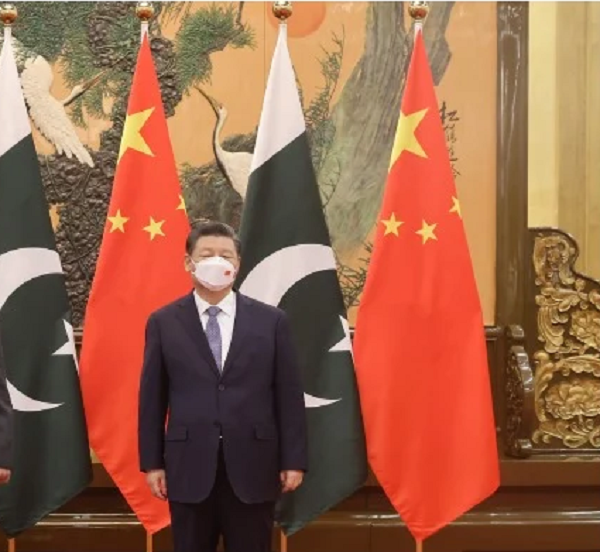
CPEC & Xinjiang Top Cornerstones of BRI By M. Zamir Assadi
CHINESE President Xi Jinping, also General Secretary of the Communist Party of China (CPC) Central Committee and chairman of the Central Military Commission, recently inspected the Xinjiang Uygur Autonomous Region in north-western China and visited officials and the general public of different ethnic groups.
Xi stressed that with the country opening wider to the world, the western region being further developed, and the Belt and Road Initiative being materialized, Xinjiang has changed from a relatively closed inland region to a frontier of opening up.
The region should develop the core area of the Silk Road Economic Belt, incorporate its regional opening-up strategy into the overall layout of the country’s westward opening up, innovate the system for an open economy, speed up the construction of major opening-up corridors, so that it can make better use of international and domestic markets and resources and actively serve and integrate itself into the country’s new pattern of development.
BRI is a transcontinental long-term policy and investment program which aims at infrastructure development and acceleration of the economic integration of countries along the route of the historic Silk Road.
The Initiative was unveiled in 2013 by Chinese President Xi Jinping and until 2016, was known as OBOR – One Belt One Road.
On March 28, 2015, the official outline for the Belt and Road Initiative was issued by the National Development and Reform Commission (NDRC), Ministry of Foreign Affairs (MOFA) and the Ministry of Commerce (MOFCOM) of the People’s Republic of China (PRC), with authorization of the State Council.
According to the official outline, BRI aims to “promote the connectivity of Asian, European and African continents and their adjacent seas, establish and strengthen partnerships among the countries along the Belt and Road, set up all-dimensional, multi-tiered and composite connectivity networks, and realize diversified, independent, balanced and sustainable development in these countries.”
Under the umbrella of the BRI, domestic and foreign financial institutions have been pouring into northwest China’s Xinjiang Uyghur Autonomous Region, looking for opportunities under China’s BRI.
Experts say that there are abundant opportunities in the infrastructure sector, as major investment is planned, and that will attract even more companies into Xinjiang.
Xinjiang is the starting point of the China-Pakistan Economic Corridor (CPEC), which links the region with the Gwadar port in Pakistan. The CPEC is estimated to draw infrastructure investment of $62 billion.
Northwest China’s Xinjiang Uygur Autonomous Region plans to invest 70 billion Yuan (8.4 billion US dollars) on 30 major projects in the next five years.
According to local officials, funds will mainly come from central and regional governments. Most of the 30 projects are expected to be completed before the end of 2005.
The Xinjiang Uygur Autonomous Region will spend 30 billion Yuan on expanding basic industries and infrastructure, mainly in transport, telecommunications, water conservancy, agriculture, energy development and raw material.
It shows the significance of CPEC as Xinjiang, being a starting point of one of the main corridors of BRI, is focusing on infrastructural development.
The infrastructural development in Xinjiang will complement the construction of CPEC that will hugely benefit the goals and aims of the greater version of the economic corridor.
Pakistan, being a very close neighbour of China and bordering with Xinjiang region, has huge potential to get maximum benefits from the infrastructural development of Xinjiang.
Xinjiang is investing on expanding basic industries and infrastructure, mainly in transport, telecommunications, water conservancy, agriculture, energy development and raw material, so Pakistan got the splendid opportunity to take maximum benefits from this development in these specific areas.
The Urumqi International Land Port Area in northwest China’s Xinjiang Uygur Autonomous Region is well on its way to become an important growth pole powering the region’s opening-up and economic development.
By June 2022, the land port area had operated more than 5,900 China-Europe freight train trips via 21 routes linking 26 cities in 19 European and Asian countries and regions. The trains carry over 200 categories of goods, ranging from daily necessities and garments to mechanical equipment and building material.
The Belt and Road Initiative, which initiated a new prospect for China’s opening up, has also provided unprecedented opportunities for Xinjiang which is located at the heart of the ancient Silk Road.
The region posted over 67.4 billion Yuan in foreign trade value in the first five months of this year, up 30.9 percent year on year.
Pakistan through CPEC may expand its trade linkages with Central Asian and European countries through Xinjiang that offers more quick and affordable trade routes in a more peaceful and sustainable way.
Pakistan may evolve more dynamic strategies and explore more options to expand CPEC through Xinjiang for opening up its trade linkages in a greater way that will be beneficial for the domestic economy and trade boom.
CPEC & Xinjiang Top Cornerstones of BRI By M. Zamir Assadi
Source: https://pakobserver.net/cpec-xinjiang-top-cornerstones-of-bri-by-muhammad-zamir-assadi/

